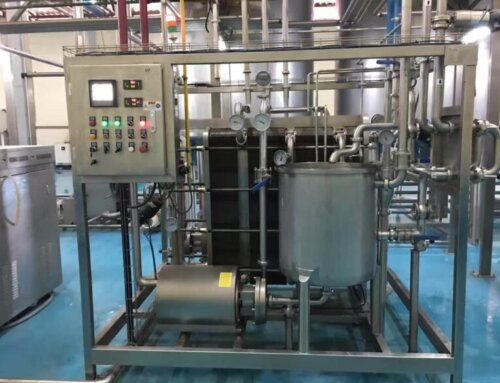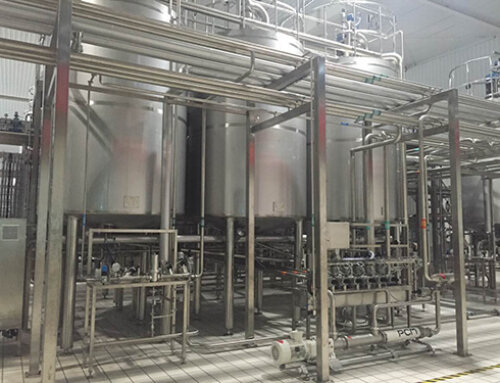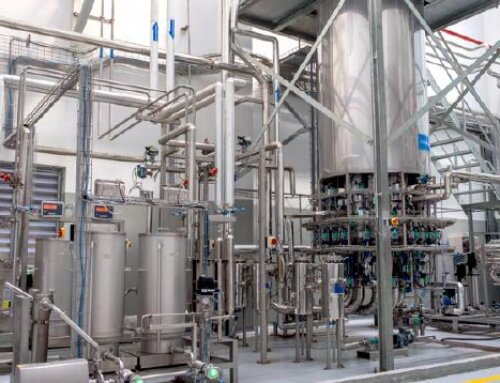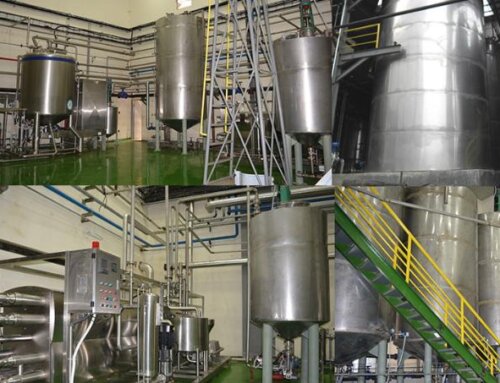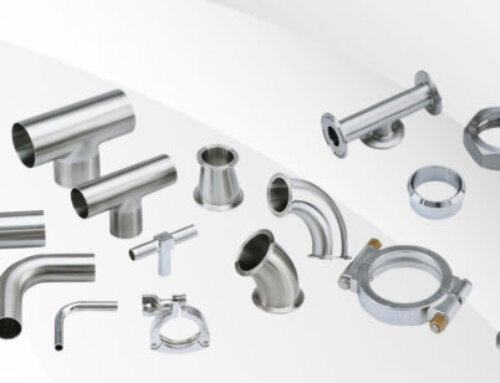Rice Milk Processing Description
Rice milk beverage processing involves a series of processing steps including soaking, milling, enzymatic hydrolysis, formulation, sterilization, homogenization, and packaging to produce a plant-based protein beverage. As rice is abundantly produced in Asia, rice milk beverages are becoming increasingly popular in Southeast Asian or East Asian countries such as Thailand, China, Japan and Vietnam.
The main raw material for rice milk beverages is rice, which can include various types such as white rice, brown rice, and black rice. Rice is rich in nutrients, containing approximately 25% carbohydrates, 5% protein, dietary fiber, various minerals, vitamins, and fats, making it an ideal raw material for producing plant-based milk beverages.
Due to the high content of carbohydrates and starch sugars in rice, the gelatinization of rice milk and enzymatic hydrolysis of starch sugars are crucial steps when rice milk processing.
The production capacity of rice milk processing ranges from 500L to 5000L for customers to choose from. The final rice milk products can be packaged in containers such as cartons, plastic bottles, glass bottles, tin cans, or stand-up pouches.
The rice milk processing equipment mainly includes rice soaking tanks, wet rice milling machines, rice milk gelatinization and enzymatic hydrolysis tanks, rice milk filters, rice milk formulation tank systems, rice milk sterilization, deaeration and homogenization machines, rice milk filling and packaging equipment, RO pure water production systems, CIP in-place cleaning systems, and utilities such as boilers, cooling towers, and air compressors.
All rice milk processing machines are made of food-grade SUS304 materials, ensuring hygiene, safety, and high quality during the processing of rice milk beverages.

Rice Milk Production Process Introduction
Rice milk processing mainly involves soaking and milling rice grains, enzymatic treatment for starch breakdown, blending and straining, heat treatment for safety, homogenization for consistency, filling, packaging, and quality control measures to ensure a nutritious and safe beverage.
Throughout the production process, quality control measures are implemented to ensure that the rice milk meets safety, quality, and regulatory standards. This includes monitoring parameters such as temperature, pH, and microbial counts at various stages of production. Additionally, proper sanitation practices and equipment cleaning are essential to prevent contamination and ensure food safety.
Rice baking and soaking
Choose high-quality rice or brown rice, without yellow grains, black grains and mildew. After carefully removing impurities, bake it at 180℃ until it is light in color, and take it out to cool until the flavor comes out. Pay attention to the temperature when baking. If the temperature is too high, the rice will burn, causing the rice milk to turn black and precipitate; if the temperature is too low, the rice milk flavor cannot be extracted. The baked rice is soaked in hot water at 60°C for one hour (it can also be soaked at room temperature for 12-14 hours) until the tissue softens. The ratio of rice to water is about 1:4.
Rice milling and grinding
Rice refining can be done using a colloid mill or a wet refiner. The soaked rice is transported to the refiner, and 2-4 times RO water is added to grind the rice into rice slurry with appropriate concentration and thickness. A vibrating screen equipment can be connected under the refiner to ensure the thickness of the rice slurry. At the same time, the bran in the rice milk can be screened out. Adding pure water during the refining process can mix water and material liquid into slurry, and can also reduce the temperature of the refiner.
Rice slurry gelatinization and enzymatic hydrolysis
Heat the ground rice milk to 75-80°C, and then pump it into the gelatinization enzymatic hydrolysis tank. During the gelatinization process of the rice milk, add about 6 times the amount of pure water. During the gelatinization process, constant stirring is required to prevent uneven gelatinization. Then add 0.4% alpha amylase to the rice milk, heat it to 80-90°C, and continue to stir for 3-4 hours for enzymatic hydrolysis.
Rice milk filtering
After the enzymatically hydrolyzed, rice milk is cooled to normal temperature, it is transported to a double filter or bag filter to remove insoluble matter in the enzymatic hydrolyzate.
Rice milk preparation and formulation
Add syrup, pure water, flavors and other ingredients to the mixing tank according to the formula and mix with the filtered rice milk. After stirring evenly, the finished rice milk drink is obtained. During the preparation process, the materials can be heated to about 60°C for hot preparation/mixing, or they can be prepared/mixed at room temperature.
Rice milk homogenization, sterilization and degassing
The rice milk beverage is heated to 60-70°C and then pumped into the homogenizer. The homogenization pressure is 20-40Mpa. It is homogenized in two stages. After UHT sterilization (137-140°C, 3S), it is cooled to 50°C. The liquid is sent to the vacuum degasser to remove oxygen and odor, and is finally cooled to the filling temperature for filling.
